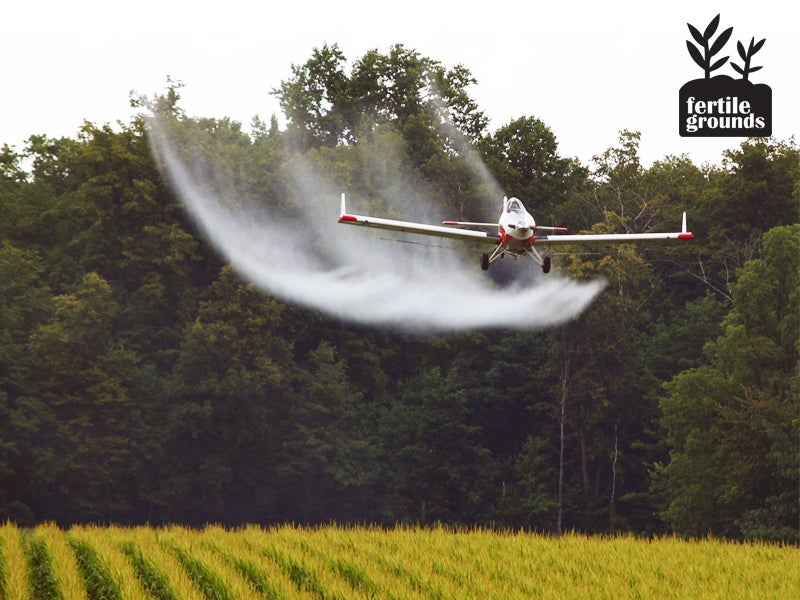Breaking the Cycle: Moving from Chemicals to Cover Crops
Legal battles over pesticides are full of twists and turns, but we can make a better case for dropping them by ensuring farmers have better alternatives to harmful chemicals.

This page was published 9 years ago. Find the latest on Earthjustice’s work.
When we enter into legal battles against the chemical industry, we know we are the underdogs. We fight for the underrepresented—farmworkers and children—against an entrenched industry with far greater wealth, power and influence. Despite the odds stacked against us, Earthjustice and other environmental advocates have gotten rid of some of the most dangerous chemicals on the market.
Yet these legal battles are long and tangled, and often, new and equally worrisome chemicals simply crop up as replacements. Some 1.1 billion pounds of pesticides and herbicides are sprayed on fruits and vegetables each year in the United States, and 20,000 pesticide poisonings are reported annually. Many more go unreported. Because so many harmful chemicals are still employed in agriculture, we must also find other ways to reduce their use.
The chemical industry and our industrial farming system are so interdependent that even the EPA appears to think the system is too big to fail. Earthjustice and other advocates are fighting to get dozens of agricultural chemicals off the market because of the clear risks they pose to human health, wildlife and the quality of our water and soil. Here are a few examples of the twists and turns involved:
Enlist Duo
The EPA initially approved this new herbicide, designed for use on genetically modified corn and soy. Earthjustice lawyers fought back, pointing out that the EPA had ignored risks to iconic endangered animals such as whooping cranes, which the agency knew would feed in sprayed fields.
The EPA attempted to take back its approval, which surprised and delighted health and environmental advocates. But the court essentially dismissed this move at the urging of the manufacturer, Dow, leaving the door open for the use of Enlist Duo on millions of acres of farmland.
Chlorpyrifos
After nearly 15 years of legal pressure – four lawsuits and two petitions–in late 2015 the EPA finally proposed to end the use of this neurotoxic pesticide on food crops. Chlorpyrifos (and other similar agricultural chemicals derived from WWI-era nerve gases) have been shown to irreversibly damage children’s brains. More than 80,000 Americans wrote to the EPA supporting its proposal, but it isn’t final yet. Dow is expected to counterpunch.
Sulfoxaflor
When the EPA approved sulfoxaflor in 2013, beekeepers and honey-makers sued. Sulfoxaflor is one of an entire class of chemicals that’s highly toxic to honeybees, which pollinate about a quarter of our food supply. Last year, the courts agreed that the EPA had made its approval decision using “flawed and limited data.” Sulfoxaflor is now off the market, but several states have asked for emergency use exemptions, claiming they have no alternatives.
When states argue that their farmers have no alternatives to sulfoxaflor, what they’re really saying is that the way they grow crops is dependent on chemicals. Growing nothing but a single species of plant over thousands of acres has its drawbacks; you need synthetic chemicals to enhance the performance of your soil.
But recently, more farmers—even on large commercial farms—are discovering the benefits of planting a special mix of crops, known as cover crops, in between harvests. These crops, such as hairy vetch, barley, sunflower and ryegrass, grow deep roots that break up compacted soil, support healthy microbes and protect against weeds and pests. They “cover” topsoil and prevent it from eroding. Cover-cropping has been proven to increase the amount of water and carbon that soil can store and reduce the need for chemical fertilizers and pesticides.
Although routine among small and organic farmers, the use of cover-cropping is still rare in large-scale conventional farming—in the 2010 agricultural census, only about 10 million out of 400 million acres of U.S. cropland were planted with cover crops—a few small surveys and anecdotal evidence suggest that the practice is growing. (The technique was recently covered in the business section of the New York Times.)
Part of the reason cover-cropping is still rare is that, unlike the use of GMO crops and chemical pesticides, there’s no huge industry to back the practice and no deep pockets or political clout to ensure that cover crops become a standard tool farmers can use.
What cover cropping does have is a small number of research acres to quantify its benefits and the experience of many small farmers over millennia who’ve figured out that it works. This is a start but it’s not enough. Only when agricultural policies support sustainable farming and pest management techniques can we finally begin to escape our reliance on harmful chemicals and move toward a healthier system of food production.
Fertile Grounds is a blog series that examines the challenges and opportunities in ensuring access to healthy, sustainable and affordable food for all. We talk about the entire lifecycle of food—from seed selection and planting to consumption and disposal—because there is potential for improvement throughout. We’re informed by the expertise of our many clients and allies and by Earthjustice’s years of work to ban harmful pesticides, encourage sustainable farming methods, reduce pollution, support farmworker justice and promote a healthy relationship between farmers and communities.
Earthjustice’s Sustainable Food and Farming program aims to make our nation’s food system safer and more climate friendly.